《演讲的艺术》.ppt
- 格式:ppt
- 大小:1.65 MB
- 文档页数:13
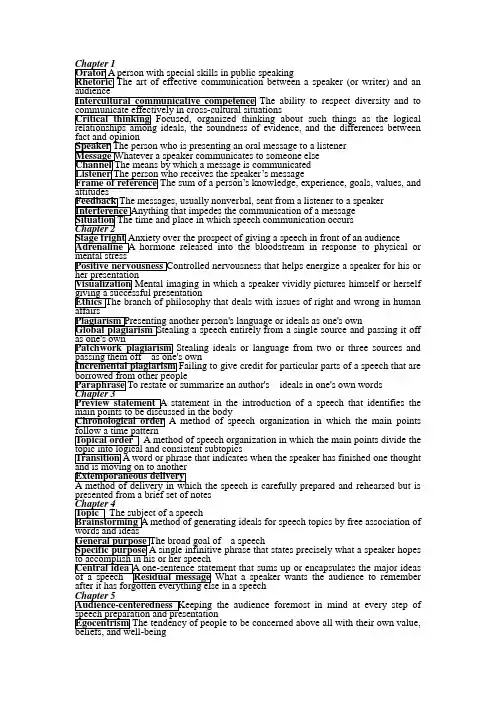
The art of effective communication between a speaker (or writer) and anThe ability to respect diversity and toFocused, organized thinking about such things as the logicalideals, the soundness of evidence, and the differences between’s messageThe sum of a person’s knowledge, experience, goals, values, andhormone released into the bloodstream in response to physical orMental imaging in which a speaker vividly pictures himself or herselfStealing ideals or language from two or three sources andFailing to give credit for particular parts of a speech that areTo restate or summarize an author's ideals in one's own wordsstatement in the introduction of a speech that identifies theA method of speech organization in which the main pointsA method of speech organization in which the main points divide theA word or phrase that indicates when the speaker has finished one thoughtpresented from a brief set of notesa speechWhat a speaker wants the audience to rememberthe audience foremost in mind at every step ofThe tendency of people to be concerned above all with their own value,Audience characteristics such as age, gender, education,Questions that require responses at fixed intervals along a scale ofthat allow respondents to answer however theymaterials used to support a speaker's ideas. The threeA story, narrative, or anecdote developed at some length toa speech together in a particular way to achieve aThe major points developed in the body of a speech. Most speechesmethod of speech organization in which the main pointsmethod of speech organization in which the main points follow amethod of speech organization in which the first mainof a problem and the second main point presents aA method of speech organization in which the main points divide theA word or phrase that indicates when a speaker has finished one thoughtstatement in the body of the speech that summarizes theA very brief statement that indicates where a speaker is in the speech or thatA question that the audience answers mentally rather than outstatement in the introduction of a speech that identifies the课后练习Chapter 4Topic :Studying abroadGeneral Purpose:To persuadeSpecific Purpose:To persuade the audience to study abroad will enhance your personal development,academic development,and career development.Central Idea:Main points: I. You should study abroad because it will enhance your personal development.II. You should study abroad because it will enhance your academic developmentIII. You should study abroad because it will enhance your career development.Topic : Events in triathlonGeneral purpose: To informSpecific purpose: To inform the audience of the three events in triathlon : swimming, cycling and running.Central Idea:Main points:The first event in triathlon is swimmingThe second event in triathlon is cycling.The third event in triathlon is running.I. The first major cause of airplane crashes is pilot error.II. The second major cause of airplane crashes is weather. Topical OrderIII. The third major cause of airplane crashes is mechanical failure.I. The peak of Mount Kilimanjaro has an arctic climate with snow,ice,,and violent winds.II. The middle of Mount Kilimanjaro has a rain forest climate with lush vegetation and diverse animal species.III. The base of Mount Kilimanjaro has a bushland climate with pastures and farming communities. Spatial OrderI. The Chinese film industry began in the early 20th century.II. The first golden period of Chinese cinema occurred during the 1930s.III. The second golden period occurred in the years after World War II.IV. The Chinese film industry was scaled back during the 1960s and 1970s.V. Today Chinese films are in another golden period of international acclaim.Chronological Order。
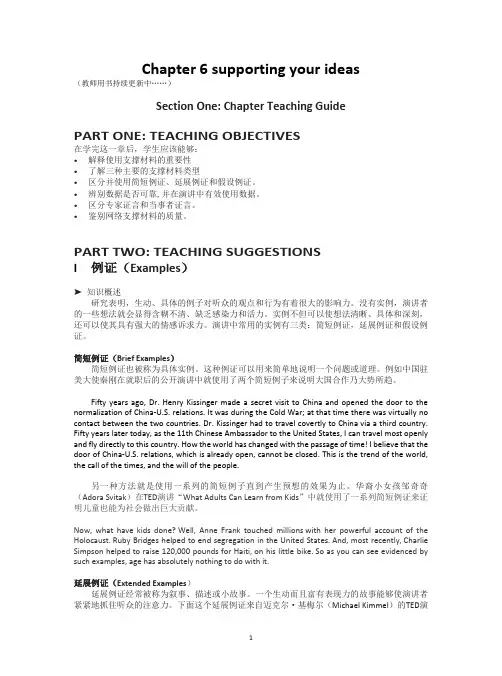
Chapter 6 supporting your ideas(教师用书持续更新中……)Section One: Chapter Teaching GuidePART ONE: TEACHING OBJECTIVES在学完这一章后,学生应该能够:•解释使用支撑材料的重要性•了解三种主要的支撑材料类型•区分并使用简短例证、延展例证和假设例证。
•辨别数据是否可靠,并在演讲中有效使用数据。
•区分专家证言和当事者证言。
•鉴别网络支撑材料的质量。
PART TWO: TEACHING SUGGESTIONSI例证(Examples)➤知识概述研究表明,生动、具体的例子对听众的观点和行为有着很大的影响力。
没有实例,演讲者的一些想法就会显得含糊不清、缺乏感染力和活力。
实例不但可以使想法清晰、具体和深刻,还可以使其具有强大的情感诉求力。
演讲中常用的实例有三类:简短例证,延展例证和假设例证。
简短例证(Brief Examples)简短例证也被称为具体实例。
这种例证可以用来简单地说明一个问题或道理。
例如中国驻美大使秦刚在就职后的公开演讲中就使用了两个简短例子来说明大国合作乃大势所趋。
Fifty years ago, Dr. Henry Kissinger made a secret visit to China and opened the door to the normalization of China-U.S. relations. It was during the Cold War; at that time there was virtually no contact between the two countries. Dr. Kissinger had to travel covertly to China via a third country. Fifty years later today, as the 11th Chinese Ambassador to the United States, I can travel most openly and fly directly to this country. How the world has changed with the passage of time! I believe that the door of China-U.S. relations, which is already open, cannot be closed. This is the trend of the world, the call of the times, and the will of the people.另一种方法就是使用一系列的简短例子直到产生预想的效果为止。
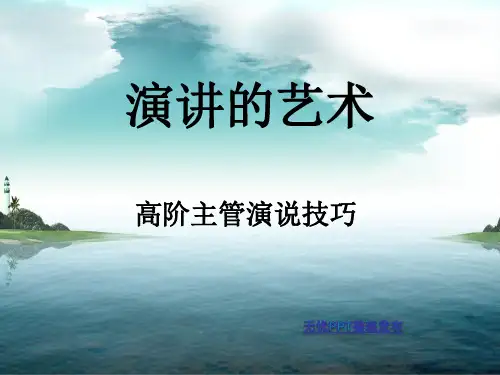
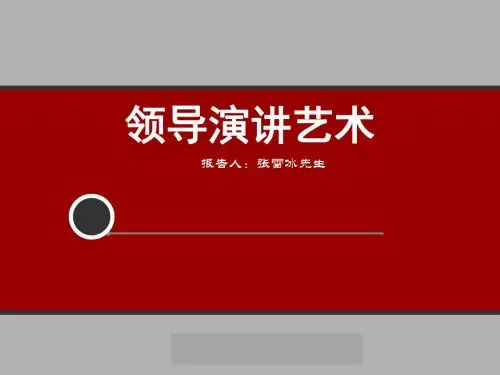
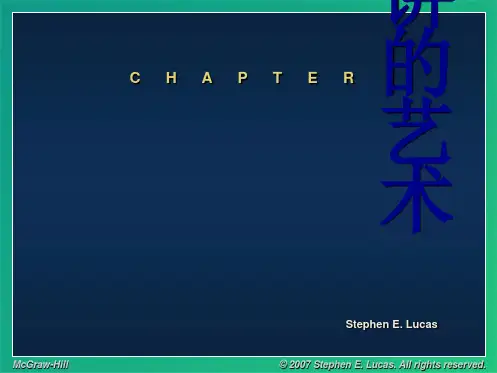
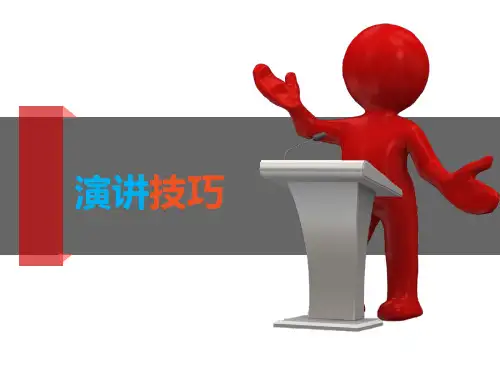
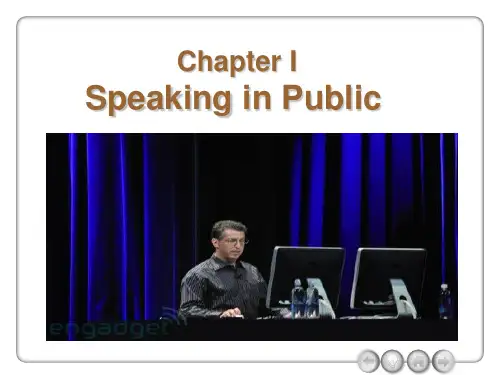
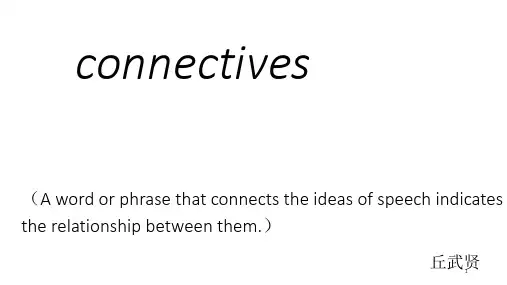
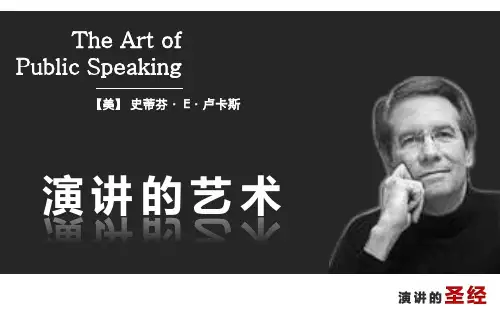
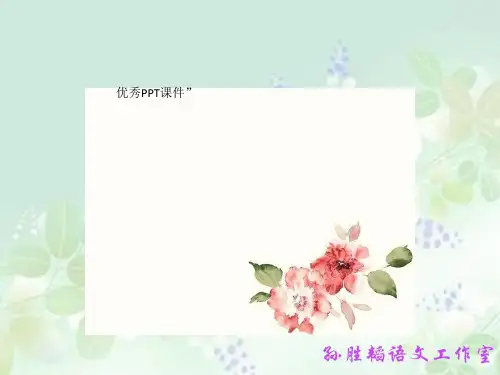
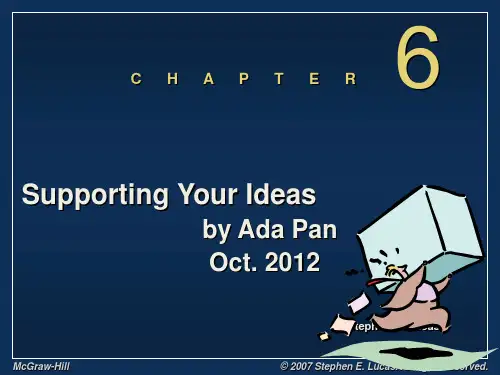
Chapter 1 Speaking in Public(教师用书持续更新中……)Section One: Chapter Teaching GuidePART ONE: TEACHING OBJECTIVES在学完这一章后,学生应该能够:•讨论演讲作为一门研究领域的悠久历史。
•解释跨文化交流的含义和实际应用。
•解释演讲与批判性思维之间的关系。
•识别演讲和日常会话之间的相同点和不同点。
•解释演讲交流的过程和要素。
PART TWO: TEACHING SUGGESTIONS纵观历史,人们始终把演讲当成重要的交流工具。
在当今世界,很多人也都通过演讲来传播他们的思想和影响。
有些学生可能会认为英语演讲距离自己的实际生活比较遥远,因为自己既不打算做外交官,也不想从事其他的涉外工作。
教师应该强调,随着全球化进程日益加速,今后从事各行各业的中国大学生都会或多或少地在工作或生活中用到英语演讲。
事实上,即便是还没有走向工作岗位的在校大学生也会有很多需要用到英语演讲的机会。
以下面的一些场景为例:场景一:学校请来的一位外籍教师对中国的很多习俗和文化理念都不了解,因此在所授课的班上经常会闹出一些误会和笑话。
有良好英语演讲能力的学生能够当众帮助这位外籍教师避免这些不必要的误会和笑话。
场景二:一个大型的国际活动正在选拔一批大学生志愿者。
选拔测试的一项主要内容是要求申请者用英语向选拔委员会陈述自己希望入选的原因以及自己的入选资格和条件。
英语演讲能力较强的申请者更有可能入选。
场景三:一位大四学生在一家国有企业实习期间接到一项临时任务,代替突然生病的主讲人向一组前来洽谈业务的外商介绍本企业刚刚推出的一个新产品。
由于这位实习生在英语演讲课上曾受过很系统的训练,加上实习期间对企业产品的了解,所以很圆满地完成了这项任务,得到了企业领导的赞扬。
很多研究报告表明,即便是在高度专业的领域,雇主在确定招聘或升职的人选时也会坚持将雇员的语言交流能力列为最重要或是近乎最重要的技能。
演讲的艺术一、演讲的技巧(一)演讲的本质什么是演讲?演讲是以宣传鼓动为目的,带艺术性的严肃的社会实践活动。
要求演讲者面对听众,以有声语言为主要表达形式,以态势语言为辅助形式,系统、鲜明的阐明自己的观点和主张。
1、演讲不同于朗诵。
(1)演讲与朗诵的范畴不同,演讲属精神实用艺术,侧重于宣传鼓动。
朗诵属表演艺术,侧重于欣赏。
(2)演讲的选题有很强的现实性、时代性。
朗诵的材料有很大的超越性。
(3)演讲讲究激情,其语言有特殊性。
演讲一定要有激情点(高潮)。
朗诵追求意境,其语言属舞台表演语言。
2、演讲不同于一般的报告。
内容上,报告注重政策性、权威性、指导性。
演讲注重典型性、鲜明性;语言上,报告要求朴实,感情表达不要求大起大落,基调平稳。
朗诵必须要有起伏。
(二)演讲的作用1、促进作用:促进历史转变、促进文明建设、促进人材成长。
2、教育作用:既是教育别人,又是自我教育。
3、美感作用:演讲的题材首先是真实的,必须歌颂真善美,要求形式是美的,语言是美的,态势是美的。
要使人产生愉悦,听一次演讲不仅是一次心灵的进化,而且是一次审美观的升华。
二、演讲稿的写作方法演讲稿也叫演说辞,它是在较为隆重的仪式上或某些公众场所发表的讲话文稿,是演讲的依据,具有宣传、鼓动、教育和欣赏等作用,它可以把演讲者的观点、主张与思想感情传达给听众以及读者,使他们信服并在思想感情上产生共鸣。
讲演稿的结构形式是多种多样的,但归纳起来大致有三部分的内容。
一是提出问题,点出讲话的要点,引起听众的注意和兴趣;二是阐述讲演的主旨,分析要说明的问题;三是总束全文,照应开头,或提出希望祝愿,激励鼓舞听众。
写作演讲稿要注意以下三个特点:第一、针对性。
所谓针对性,首先是作者提出的问题是听众所关心的问题,评论和论辨要有雄辩的逻辑力量,要能为听众所接受并心悦诚服,这样,才能起到应有的社会效果;其次是要懂得听众有不同的对象,不同的层次,而“公众场合”也有不同的类型,在学校如升旗仪式、班会、知识竞赛、学生会干部竞聘等场合,写作时要根据不同场合和不同对象,为听众设计不同的演讲内容。